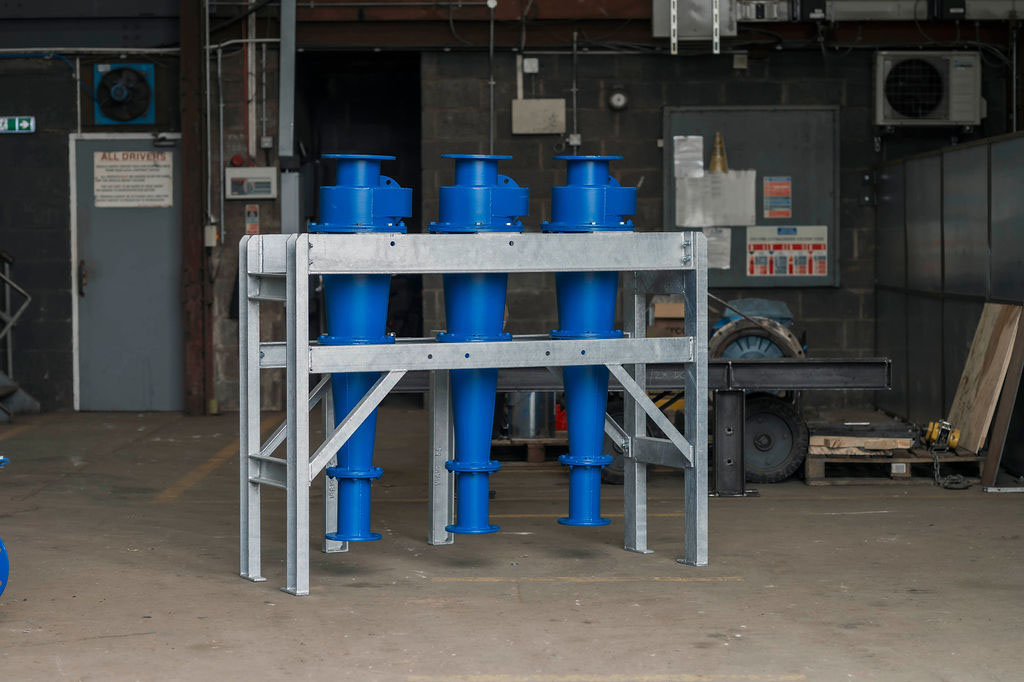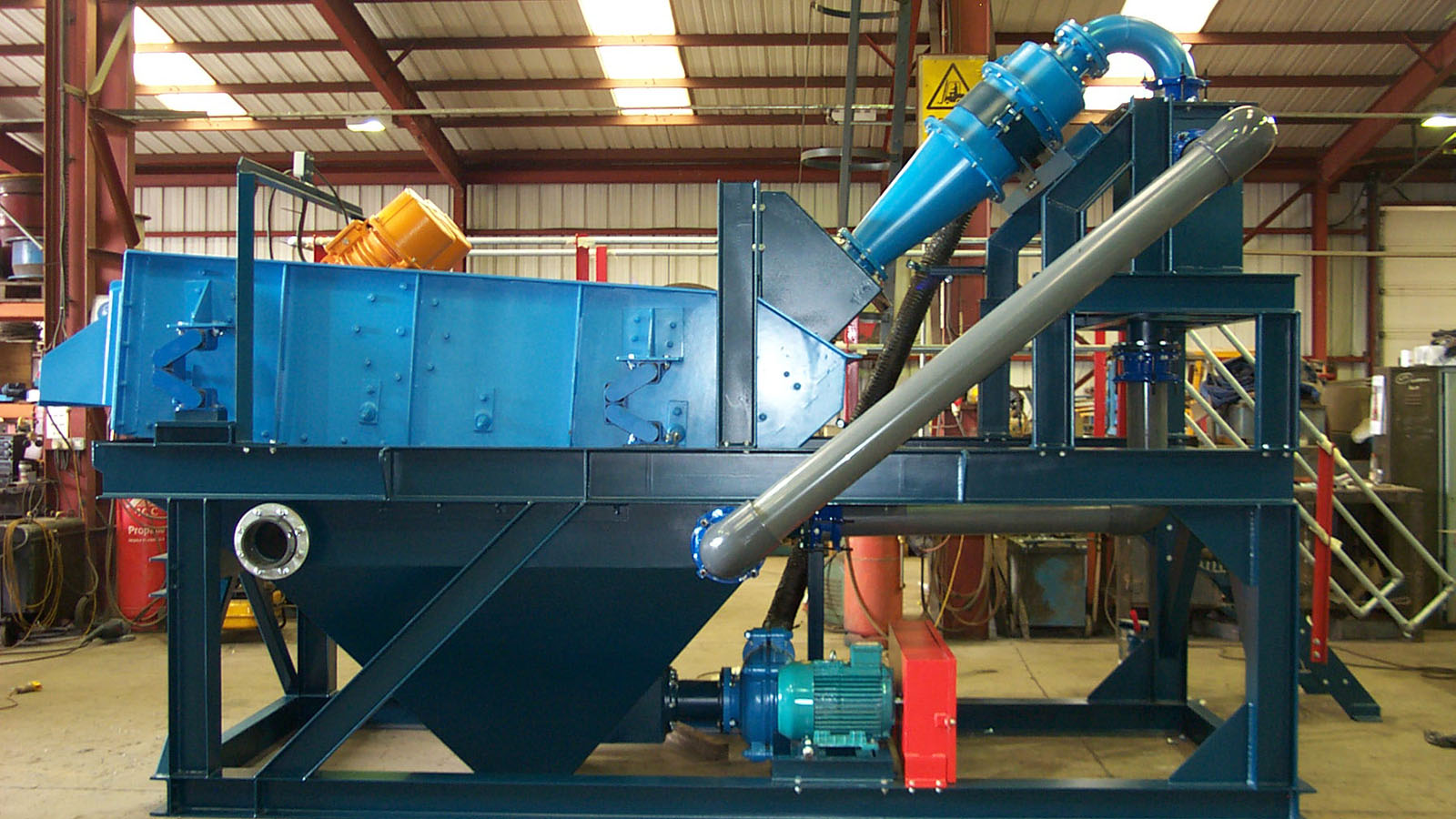Overview
The Parnaby Sizing Cyclones, also commonly referred to as Vertical Hydro-Cyclone Separators are used for classifying fine materials. Most commonly used in sand processing to produce one or two grades of sand from quarrying, recycling, and sand & gravel applications, cyclones can often be referred to as sand plants in wash plant terminology. The primary purpose is to desilt the material by removing all the impurities out of the sand. Parnaby vertical cyclones are suitable for classifying product down to as exacting fractions as 20 to 150 microns, and we offer a range of sizes depending on the classifying requirements and throughput.
All our vertical fines classifying cyclones come with integrated sump tanks, pumps and dewatering screens configured to each customers specific requirements to ensure the purest of products. The cyclone gives maximum size protection before the thickener and classifier components, ensuring optimal recovery of materials out of the water system.
How do vertical cyclone classifiers work?
Vertical Hydro-Cyclone Separators work on a centrifugal basis and are mounted so that the smaller particles come out of the top and the larger particles at the bottom using gravity.
FAQs
Sizing cyclones, also known as vertical hydro-cyclone separators, are equipment used in various industries for classifying fine materials such as sand, aggregates, and minerals. They operate on the principle of centrifugal force to separate and classify materials based on size and density.
Sizing cyclones are widely used in recycling, mining, sand and aggregate industries for various applications such as separating and classifying sand and minerals, removing impurities from water, and recovering valuable materials.
Sizing cyclones work by utilising centrifugal force to separate materials based on their size and density. The material to be separated is introduced into the cyclone at high velocity, creating a spinning motion inside the device. As the material spins, the heavier particles move towards the outer wall and are separated from the lighter particles, which move towards the centre and are collected in a separate chamber.
Sizing cyclones offer several benefits such as high efficiency, low maintenance, and reduced operating costs. They can handle large volumes of material and are effective in separating fine particles from a mixture, which would be difficult to achieve using other methods.
When sizing cyclones, several factors should be considered such as the desired particle size distribution, the feed rate of the material, the density of the material, and the required throughput. Other factors such as the size and layout of the plant, and the specific application should also be taken into consideration.
Yes, sizing cyclones can be customised to meet the specific needs of a particular application. They can be designed with different sizes and configurations to handle varying feed rates, particle sizes, and densities. Customization can also include the use of materials to suit specific environmental conditions and the incorporation of additional features such as wear protection and automation.
The average lifespan depends on several factors such as the operating conditions, the material being processed, and the maintenance practices. With proper maintenance and care, sizing cyclones can last for several years. Regular cleaning and replacement of worn components can also extend the lifespan of the cyclone.
Make an enquiry

Ian Parnaby
Projects Manager




